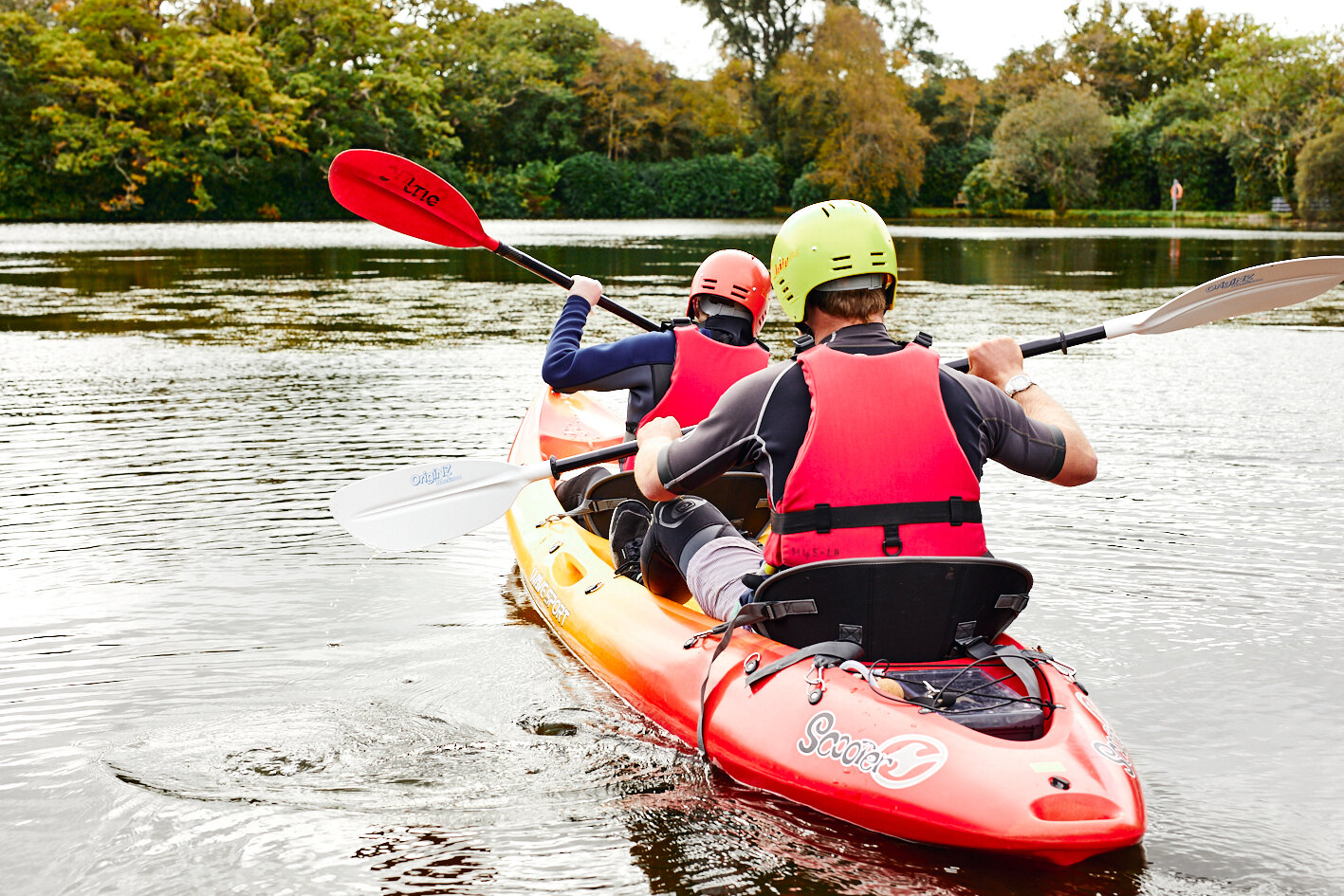FoAM Kernow & Access Lizard Adventure
Smartline brought together communities and businesses to create a unique activity: sonic kayaking for visually impaired people.
We brought two forward-thinking Cornish organisations together to work on the Sonic Kayak project, and provided each of them with In Residence support and Follow-on funding.
The result of this combination of technology and adventure is an innovative kayaking experience that opens up adventure to wider, previously excluded communities, while helping these organisations to grow and develop.
Take a look at our short film to see the kayaks being put to the test.
“That feeling of being out on the water, on your own, in a solo boat just following all the sounds, was brilliant. This is what it’s all about: that independence.”
The background
The Sonic Kayak is about the perfect blend of people coming together to achieve something quite remarkable.
FoAM Kernow (recently renamed Then Try This) is a non-profit organisation run by Dr Amber Griffiths and Dave Griffiths who use technology for sustainability and community-focused goals.
The team was working with Smartline on a sonic device that would collect pollution data. Separately, the outdoor activity centre, Access Lizard Adventure, approached Smartline, wanting to make experiences more accessible for visually impaired people.
Visually impaired participants test the kayaks on the water.
The opportunity
What if these two projects could be combined? The sonic technology could help make kayaking accessible while collecting the pollution data.
FoAM received support to develop and test their sonic system in water, while Access Lizard Adventure received support to work on their new accessible model. iSight Cornwall also came on board to involve the visually impaired community.
Initially, the focus was on the safety of the kayaks. But the community said they also wanted an immersive experience, adventure and independence. This was a valuable lesson in initial end user engagement.
While FoAM worked on making the tech portable and manufacturable, Access Lizard Adventure developed the experience. Needing a new, inland body of water to play with, the team contacted Clowance Estate. The kayakers now had a lake.
The technology used to create a sensory experience.
An immersive experience
To offer an immersive adventure the team worked with CNC Craft to create a 3D touch map of the lake, while a sound artist added descriptions and created an evocative soundtrack.
The Sonic Kayak works using a pre-loaded map, which has sounds attached to it (from navigational beeps to atmosphere-enhancing music).
Kayakers can begin their journey by exploring the 3D touch map, which works alongside the kayak’s map and highlights the key navigation areas the kayaker will soon be experiencing in real life.
Once on the lake, the kayaker is on their own. The sonic technology helps them navigate with a series of beeps, music and poetry, helping them to navigate independently.
Image of one of the participants holding the wooden £D touch map.
How Smartline helped
By providing the space, funding and connections, Smartline brought these two organisations together to create something truly unique: a new, accessible adventure for the visually impaired community.
FoAM’s initial end goal, gathering samples for pollution data, is still happening, and along the way, they developed a truly innovative piece of technology. Access Lizard Adventure has enhanced their offer, not just for visually impaired adventurers but for many other groups who can benefit from more accessible activities.
“I think the most impactful part was the collaboration itself. This brought together people with a range of expertise, experiences and ideas. I think we all learnt a lot from each other.”
Smartline is continuing to work with FoAM on another project, a spin off from the Sonic Kayak project, developing an air quality sensor fit for purpose for a citizen science setting to enable positive behaviour change, leading to healthier indoor and outdoor environments.
Who was involved?
From Access Lizard Adventure: Annette Eacock and Dr Claire Eatock
From FoAM Kernow (Then Try This): Dr Amber Griffiths and Dave Griffiths
Smartline leads: Dr Jo Garrett and Emma Seymour
Two paddlers test drive the new sonic kayak on the water.




